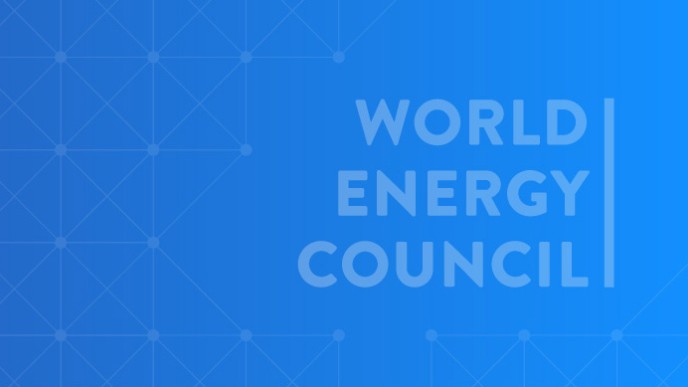The WEC’s Japanese member committee heard an analysis of the German energy transition in a talk by Dr Hans-Wilhelm Schiffer, WEC Chair of World Energy Resources and a German energy expert, in Tokyo on 24 February.
The two countries’ energy situations are different in terms of their economic and geographical context, but they do have much in common.
“Japan and Germany are very dependent on energy imports because their respective natural energy resources are extremely limited,” said Dr Schiffer. “And both countries are very dependent on exports of industrial products.”
The two countries are also similar in that they both made important policy decisions to scale back nuclear power in the immediate aftermath of the Fukushima accident in March 2011.
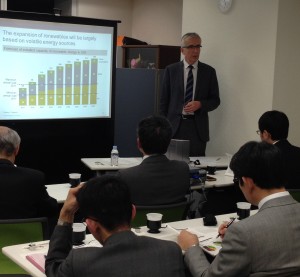
Following Fukushima Japan shut down its entire fleet of 48 commercial nuclear reactors in light of safety concerns. Nuclear had until then powered more than 30% of Japan’s energy electricity generation mix. After the shut-down, Japan filled its energy shortfall mainly by importing more liquefied natural gas (LNG) and oil.
It also turned to renewables as a solution. In 2012, Japan introduced feed-in tariffs to promote renewables uptake, but this and the higher trade deficits due to increased LNG and oil imports have upped Japan’s energy bills.
For Germany, until the Fukushima accident, about one-quarter of Germany’s electricity was provided by nuclear power. The German decision to decommission eight of its 17 nuclear power plants immediately after the accident and to phase out the remaining nine plants gradually by the end of 2022 has had major impacts on the country’s energy mix.
In the last decade, Germany had been setting incrementally more ambitious renewables targets. This is part of a plan known as the Energiewende, or ‘energy revolution’ to decarbonise the German economy.
Following Fukushima, Germany has opted to go further with renewables while it is partly replacing the reduced share of nuclear energy with coal.
German generators are also using more coal because it is the more price-competitive option. Coal prices have declined in recent years, driven by the surplus of cheap coal from the US.
German energy policy aims to make renewable energy the dominant source for power generation, providing 80% of electricity needs by 2050.
In the past, the German government has implemented various financial incentives to support renewables uptake, with feed-in tariffs (FITs) – where electricity customers pay renewable generators for feeding power into the grid – as a key feature.
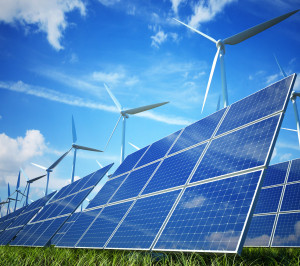
The WEC Japanese member committee wanted to learn from Germany’s experience of FITs.
“Germany is a pioneer of using feed-in tariffs to promote renewable energy, said Dr Hideaki Tanaka, Secretary of WEC Japan. “Japan, as a follower of the FIT system, has strong concerns about its impact on wholesale price, power grid stability, and electricity bill.”
From the dialogue in Tokyo, Japan energy industry executives heard that the approach of German policy had caused significant market distortions.
Dr Tanaka said the group learnt that subsidies for wind, solar, and other renewable energies stood at €20 billion in 2013, while “50% of German household electricity price is accounted for by taxes, levies, and other charges.”
Dr Tanaka added that Germany’s system in favouring energy resources based on the lowest marginal costs has meant that conventional thermal power plants are now forced to provide flexible daily operation in case of high feed-in from renewables during daytime.
Dr Tanaka said that for Germany, even with the growth of renewables, almost the same capacity of conventional thermal power as today would still be required to secure stable electricity supply.
But the reality is contrary to what is needed: “The reduced profitability of conventional thermal plants means that in some cases these plants could be decommissioned or mothballed.”
Investment in new conventional generation is being discouraged by Germany’s current market environment. As the electricity market operates on the basis of an “energy-only market” - meaning that plants can only recover their costs through the power generated - this means that the more wind and solar power generators feed their electricity into the grid, the less commercially viable it is for conventional thermal power plants.
“To overcome this situation, Germany is considering the introduction of a ‘capacity market’ similar to that in France, and hopefully one which will be adopted at the European level,” said Dr Schiffer.
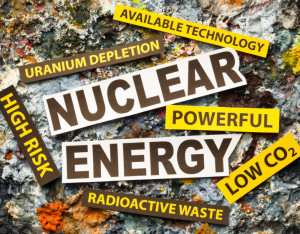
According to Dr Schiffer, an important German lesson is that market-oriented policies “seems to be the best approach” for meeting energy policy targets of competitiveness, security of supply and environmental compatibility.”
“As far as the desired increase in the share of renewable energy is concerned, that means the government should favour tenders for market premiums, which are designed to be technology-neutral,” he said, adding that the government could then be able to determine the development of renewables. He said that this would allow renewables to continue to develop while avoiding electricity price hikes.
Meanwhile, new Japanese policy could swing the pendulum back to some extent towards nuclear power.
On 25 February, the Japanese government released the country’s first draft energy policy since Fukushima, setting out that nuclear power would remain important for Japan. The new draft “Basic Energy Plan”, to be submitted to Cabinet for approval, says that nuclear has an important role as baseload generation within a mix with renewables and fossil fuels. The plan says that Japan will reduce its nuclear energy dependency from pre-Fukushima level, while reactors meeting post-Fukushima safety requirements will be restarted.
The Basic Energy Plan does not provide details of the precise mix and capacities, and any restart of nuclear reactors could take years to complete. But whatever it is that will emerge, the plan itself masks one major uncertainty: the stability of policies.
According to Dr Schiffer, any new change of government after an election could lead to a new policy as far as nuclear power is concerned. The German experience is an example.
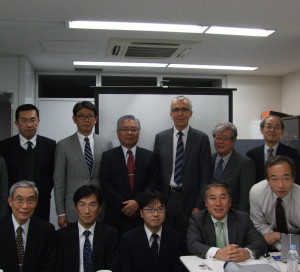
He said: “A former government restricted the use of nuclear energy. Then in 2010 a new government extended the lifetime of existing nuclear power plants, and after Fukushima a phase-out of nuclear power was decided.”
“That means a long-term, stable political framework can hardly be guaranteed, which is essential for capital-intensive nuclear energy.”
Furthermore, according to Dr Tanaka, the new Basic Energy Plan indicates the government’s intention to continuously review renewable feed-in tariffs, impact of which has been a major concern for Japan.
The current policy uncertainties and lessons learnt from Germany have led Dr Tanaka to conclude: “Germany’s energy situation could be one of the preceding models to thoroughly watch, but not a model to simply imitate.”
- Story by Monique Tsang



